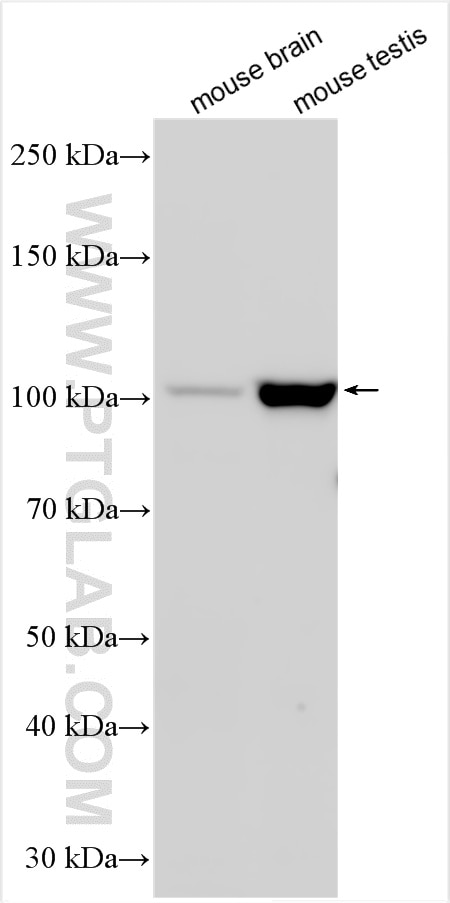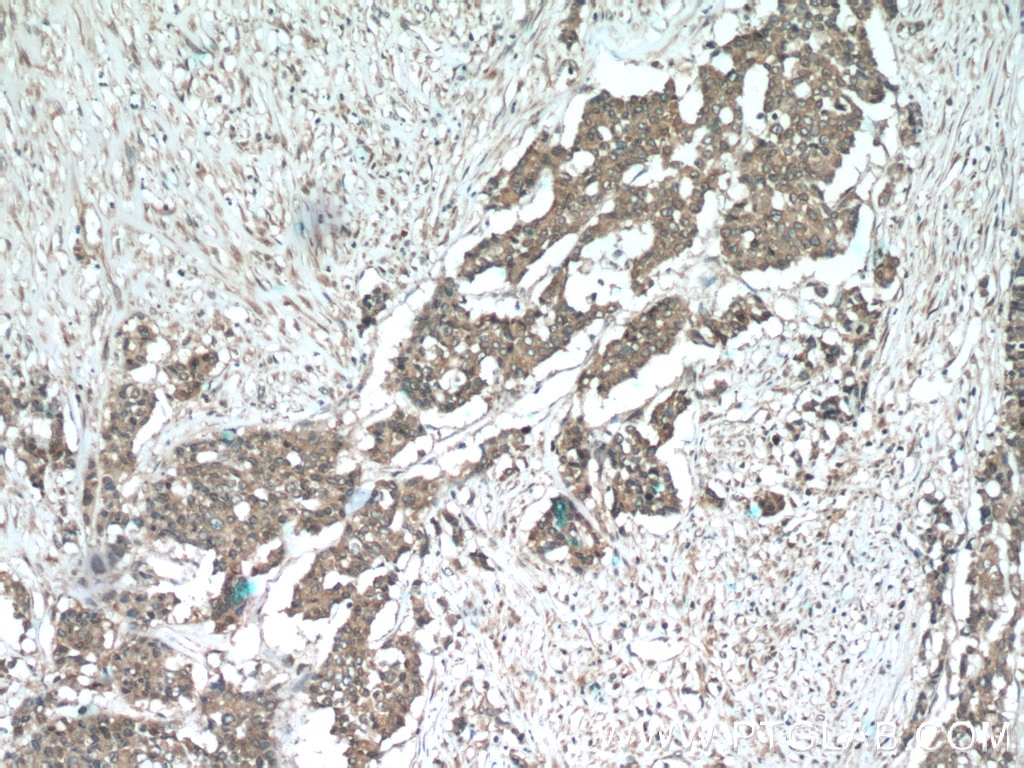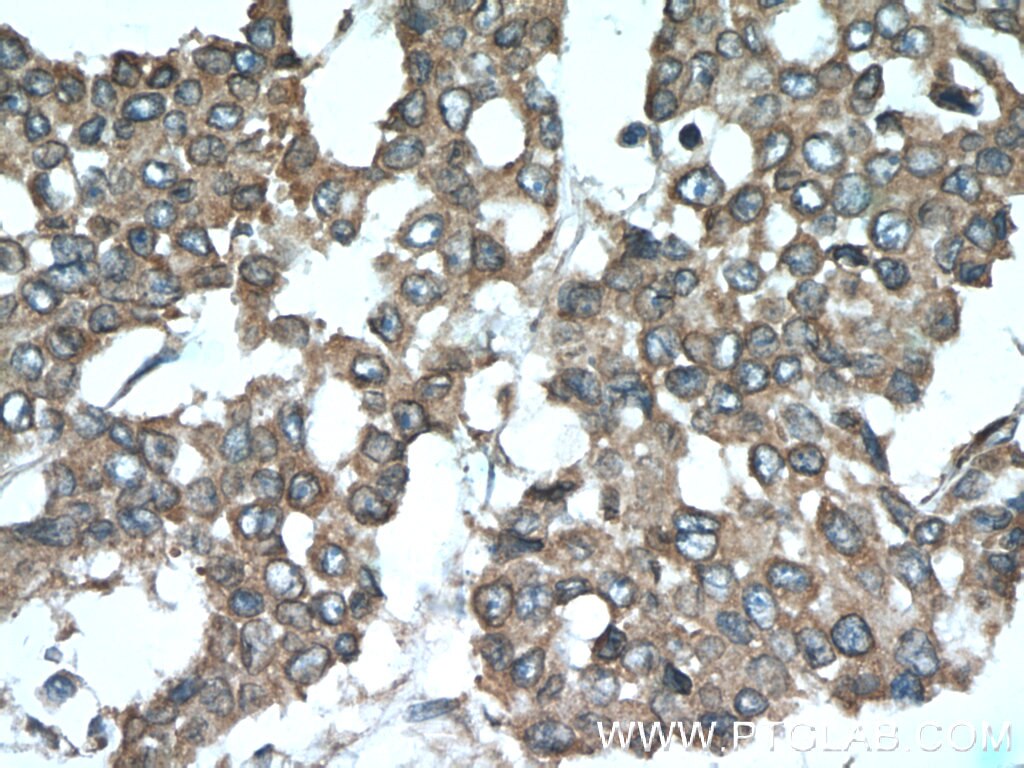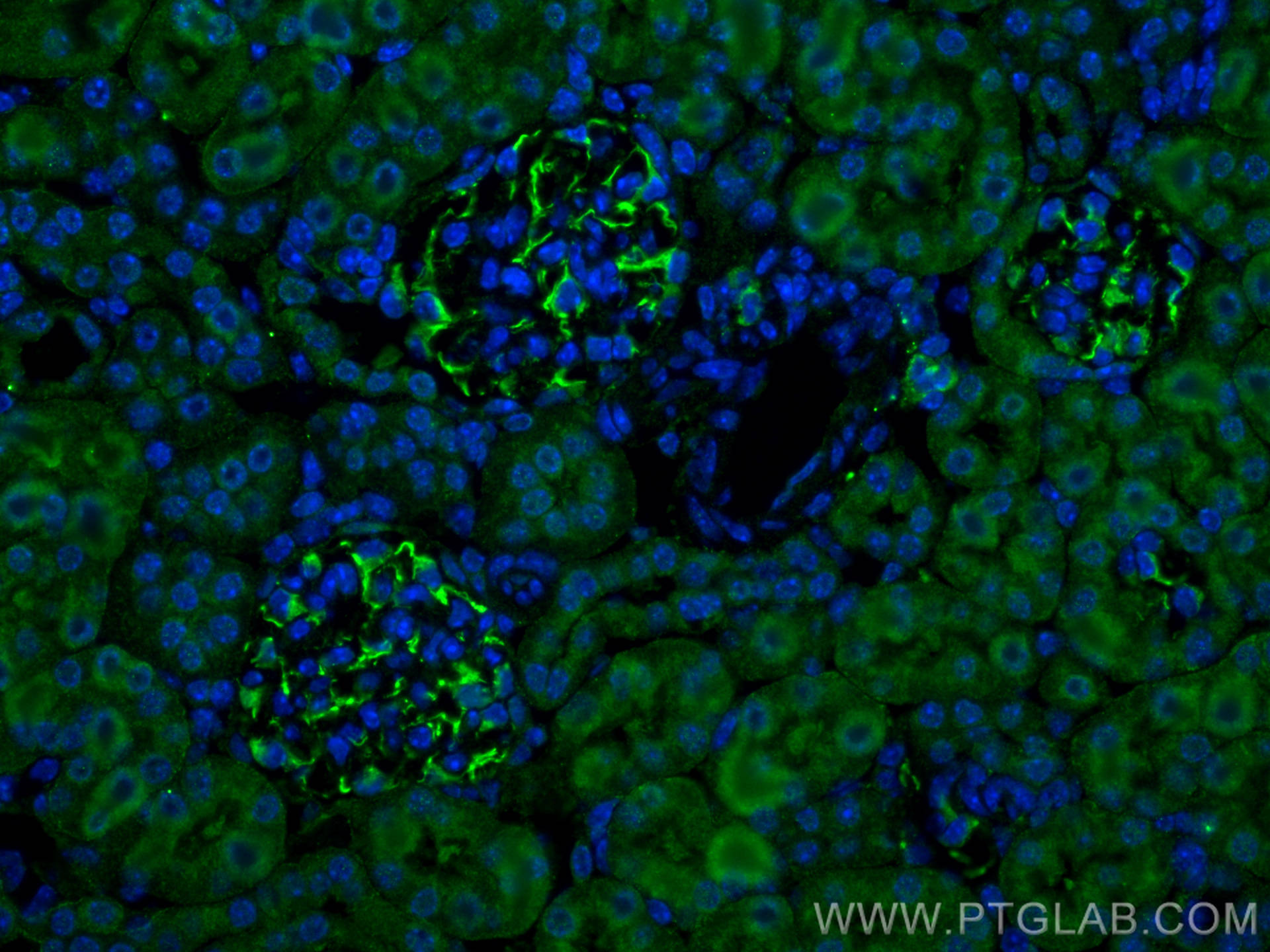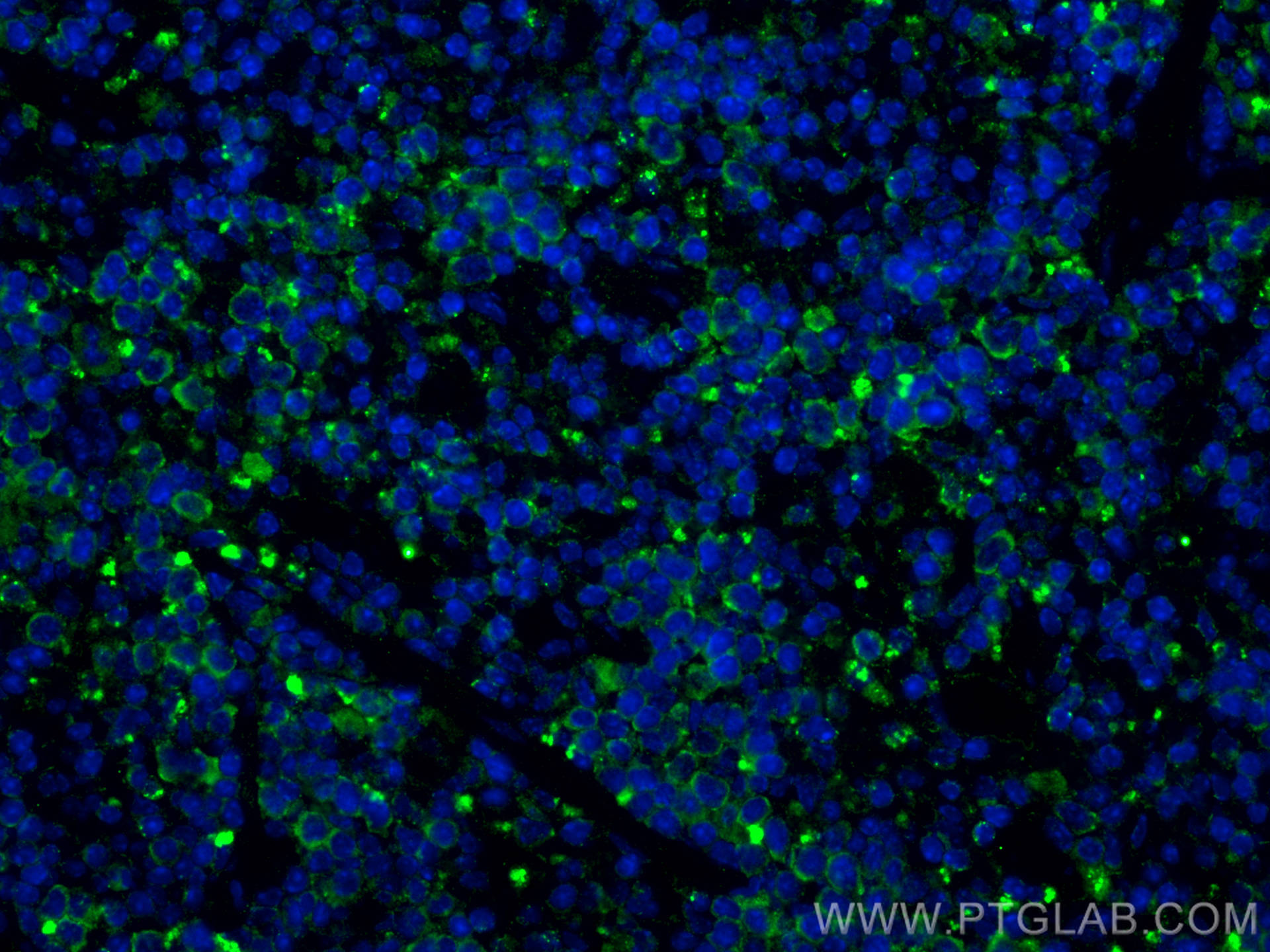Validation Data Gallery
Tested Applications
| Positive WB detected in | mouse brain tissue, mouse testis tissue |
| Positive IHC detected in | human colon cancer tissue Note: suggested antigen retrieval with TE buffer pH 9.0; (*) Alternatively, antigen retrieval may be performed with citrate buffer pH 6.0 |
| Positive IF-P detected in | mouse kidney tissue, mouse spleen tissue |
Recommended dilution
| Application | Dilution |
|---|---|
| Western Blot (WB) | WB : 1:1000-1:4000 |
| Immunohistochemistry (IHC) | IHC : 1:20-1:200 |
| Immunofluorescence (IF)-P | IF-P : 1:50-1:500 |
| It is recommended that this reagent should be titrated in each testing system to obtain optimal results. | |
| Sample-dependent, Check data in validation data gallery. | |
Published Applications
| KD/KO | See 4 publications below |
| WB | See 11 publications below |
| IHC | See 3 publications below |
| IF | See 1 publications below |
| IP | See 1 publications below |
| CoIP | See 4 publications below |
Product Information
55175-1-AP targets SMURF1 in WB, IHC, IF-P, IP, CoIP, ELISA applications and shows reactivity with human, mouse, rat samples.
| Tested Reactivity | human, mouse, rat |
| Cited Reactivity | human, mouse, rat |
| Host / Isotype | Rabbit / IgG |
| Class | Polyclonal |
| Type | Antibody |
| Immunogen |
Peptide 相同性解析による交差性が予測される生物種 |
| Full Name | SMAD specific E3 ubiquitin protein ligase 1 |
| Calculated molecular weight | 86 kDa |
| Observed molecular weight | 90-100 kDa |
| GenBank accession number | NM_020429 |
| Gene Symbol | SMURF1 |
| Gene ID (NCBI) | 57154 |
| RRID | AB_10859079 |
| Conjugate | Unconjugated |
| Form | |
| Form | Liquid |
| Purification Method | Antigen affinity purification |
| UNIPROT ID | Q9HCE7 |
| Storage Buffer | PBS with 0.02% sodium azide and 50% glycerol{{ptg:BufferTemp}}7.3 |
| Storage Conditions | Store at -20°C. Stable for one year after shipment. Aliquoting is unnecessary for -20oC storage. |
Background Information
SMURF1, also named as KIAA1625, is E3 ubiquitin-protein ligase which accepts ubiquitin from an E2 ubiquitin-conjugating enzyme in the form of a thioester and then directly transfers the ubiquitin to targeted substrates. SMURF1 interacts with receptor-regulated SMADs specific for the BMP pathway, SMAD1 and SMAD5, in order to trigger their ubiquitination and degradation and hence their inactivation. The antibody is specific to SMURF1. SMURF1 can be detected as 90-100 kDa when ubiquitinated (PMID:17576816, PMID:20484049).
Protocols
| Product Specific Protocols | |
|---|---|
| IF protocol for SMURF1 antibody 55175-1-AP | Download protocol |
| IHC protocol for SMURF1 antibody 55175-1-AP | Download protocol |
| WB protocol for SMURF1 antibody 55175-1-AP | Download protocol |
| Standard Protocols | |
|---|---|
| Click here to view our Standard Protocols |
Publications
| Species | Application | Title |
|---|---|---|
J Cell Biol A PINCH-1-Smurf1 signaling axis mediates mechano-regulation of BMPR2 and stem cell differentiation. | ||
Int J Biol Macromol Dihydroartemisinin requires NR1D1 mediated Rab7 ubiquitination to regulate hepatic stellate cells lipophagy in liver fibrosis | ||
Free Radic Biol Med CKIP-1 affects the polyubiquitination of Nrf2 and Keap1 via mediating Smurf1 to resist HG-induced renal fibrosis in GMCs and diabetic mice kidneys. | ||
Clin Transl Med MiRNA-516a promotes bladder cancer metastasis by inhibiting MMP9 protein degradation via the AKT/FOXO3A/SMURF1 axis. | ||
Br J Pharmacol Connexin32 ameliorates renal fibrosis in diabetic mice by promoting K48-linked Nox4 polyubiquitination and degradation via the inhibition of Smurf1 expression. | ||
J Immunol MLN4924, a First-in-Class NEDD8-Activating Enzyme Inhibitor, Attenuates IFN-β Production.
|

